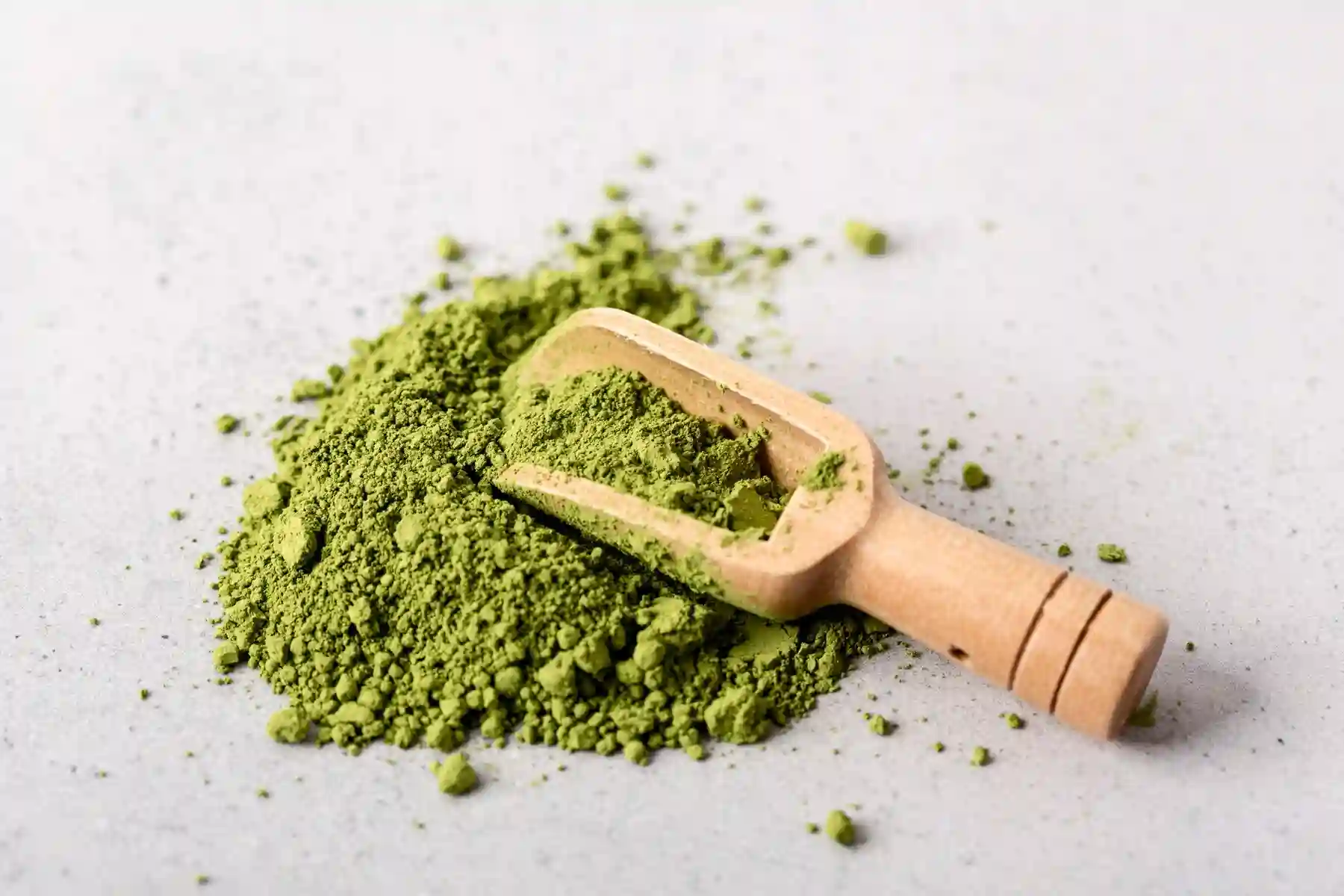Alkaloids and the Effects: Caffeine vs. Mitragynine
Coffee’s main active compound is caffeine. It’s the most widely used psychoactive substance in the world, powering mornings, night shifts, and late-night study sessions. More than 2.25 billion cups of coffee are consumed every day worldwide, making it one of humanity’s most universal daily habits. Scientists have studied caffeine for decades, linking moderate intake to sharper focus, faster reaction times, and even possible heart and metabolic benefits, while also recognizing the downsides of too much, like anxiety, poor sleep, and dependence.
Kratom, though a cousin of coffee, works differently. Instead of one dominant compound, it contains many different compounds. The main ones which have been studied the most are mitragynine and 7-hydroxymitragynine. The different compounds, are responsible for the effects you would feel after consuming kratom. Unlike coffee, the effects of kratom can vary, this depends on which strain you take and how much of it you take:
- Smaller amounts: often linked with stimulation and increased alertness.
- Larger amounts: associated with relaxation, relief, and a calmer state of mind.
- White vein strains: generally seen as more energizing, often chosen for focus, motivation, and mood lift.
- Red vein strains: typically regarded as more calming, with many people using them in the evening or for relaxation.
- Green vein strains: considered the “middle ground,” often described as balanced.
Scientific research is still limited, but both early studies and user experiences suggest kratom works in a more complex way, interacting with multiple receptor systems to produce a balanced mix of stimulation, focus, and relief. In the U.S., it’s estimated that 11 to 15 million people use kratom, showing how much it has spread beyond its traditional roots in Southeast Asia, even as debates continue about its safety and role in wellness.
How People Consume Them
Coffee has turned into an art form. From espresso shots to pour-overs, cold brew to pumpkin spice lattes, the variety is endless. People drink coffee in countless forms, and entire café cultures have sprung up around serving it in new and creative ways.
Kratom, by contrast, is usually consumed more out of practicality. Traditionally, people brewed the leaves into tea or mixed the powder into water, though many find the taste difficult. That’s why capsules, flavored shots, extracts, and kratom infused gummies, have become popular, why? To bypass tasting it. So, while people are sipping their coffee slow and making an ahh sound after every sip, people drinking kratom tea do so with a puckered face.
Taste and Experience
Everyone knows what coffee tastes like, because it’s everywhere. There’s practically a Starbucks or a Dunkin on every corner. Let’s be honest, most people don’t drink it just for the caffeine. People who drink coffee enjoy the taste. For many people, tt tastes good, smells good, and feels like comfort.
Kratom tea, on the other hand, is rarely enjoyed for its taste. It’s natural flavor is earthy and bitter, it’s a pretty unpleasant experience. Few people smile at a cup of kratom tea the way they do with coffee. But the enjoyment comes afterward. It’s valued for how it makes you feel, whether that means giving you energy, calm, or relief or some combination of the three.
Can You Mix Kratom with Coffee?
Some people don’t choose between coffee and kratom, they combine them. While they come from the same plant (Rubiaceae) family, their effects are not the same.
Why people mix them
Coffee provides an immediate, familiar jolt of caffeine, while kratom’s effects can take longer to set in but may feel smoother and more rounded. For some, the combination delivers energy without as much of the jitteriness that can come from coffee alone.
How people do it
Choose a strain and mix the kratom powder into your coffee. The balance of caffeine and the calmness from the red kratom strain can feel great, though the taste of your coffee might be ruined. Others prefer to take kratom capsules or have the kratom tea alongside their cup of coffee to keep the flavors separate.
What to watch out for
Both coffee and kratom can be stimulating. Avoid mixing white kratom with coffee to prevent over-stimulation. Additionally, mixing too much of either may increase the risk of negative effects like nausea, rapid heartbeat, or anxiety. Everyone’s tolerance is different, so moderation is key.
For those who already enjoy coffee but want to try kratom, pairing them carefully can be a way to ease into the experience. But just like with each plant individually, it’s about finding the right balance for your own body.
Considerations and Precautions
Both plants, for all their benefits, carry risks when overused. Coffee in excess can lead to jitters, disrupted sleep, and dependence. Kratom, if taken too much, may also cause tolerance and dependence, making it difficult to suddenly stop.
The difference comes down to intensity. Coffee’s drawbacks are well known and mostly harmless making it accepted as part of daily life. It is easier to over-do it with kratom since its’ effects are more pronounced. It is also available in different extract forms thus making it easier to consume high amounts of the the active compounds.
Conclusion
Coffee and kratom are botanical cousins, but they offer very different experiences. Coffee is the reliable morning ritual, loved for both its taste, smell and for a little stimulation. Kratom is appreciated for effects like relief and energy but drinking it can be unpleasant.
Both have a place in the world of natural stimulants. Most people can benefit from coffee, but not everyone can benefit from kratom. Those who do, can benefit tremendously.
FAQ
Yes. Some people like to mix kratom with coffee to balance out caffeine’s edge with calmness from kratom. Just be cautious, kratom can also be stimulating, especially white strains, and combining too much of either can lead to unpleasant experience. Also, make sure to stay extra hydrated when combining them.
Many people find kratom’s effects more pronounced than coffee’s. It also provides a wider spectrum of effects. While coffee mainly provides a small boost of stimulation, kratom can be energizing at lower doses and deeply relaxing at higher ones, depending on the strain.
White kratom strains are known for being uplifting, energizing, and good for focus. Strains like White Maeng Da, White Borneo, and White Thai, all of which are often described as stimulating strains that can help with alertness and productivity.





